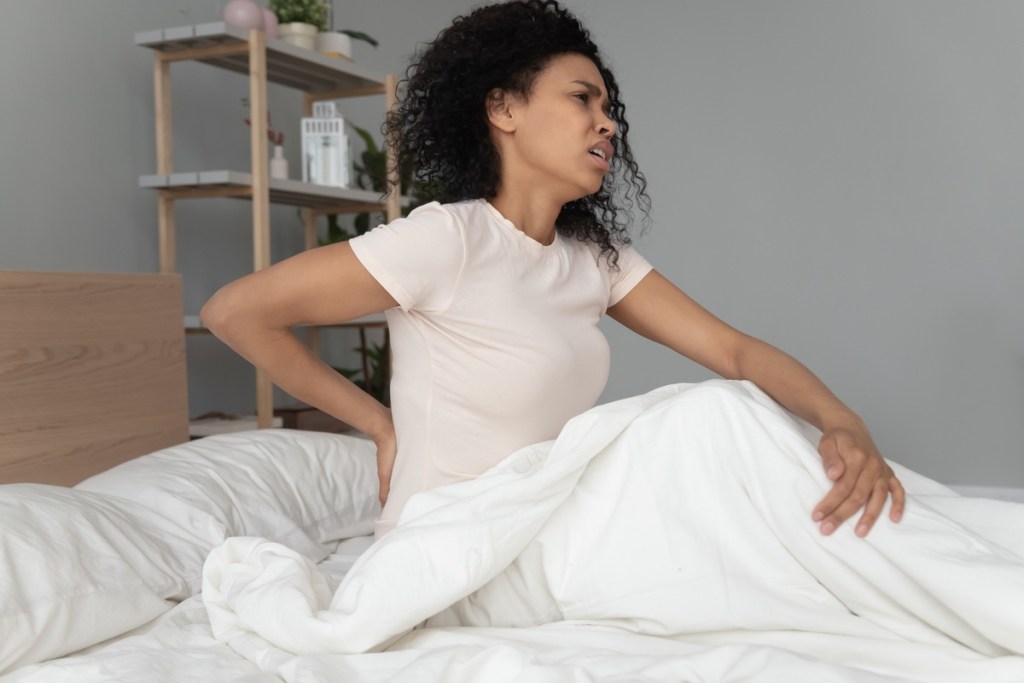
It seems no one can get through even the most casual conversation about fitness without hearing those two magic words: core strength.
It’s an understandable phenomenon. Your core – defined as the muscles around the trunk of your body, including abs, diaphragm, obliques, hips, and glutes — powers many of your everyday activities, from standing to sitting to maintaining your balance. It may not get you noticed on the beach, but your core is critical to helping you stay strong where it matters most.
There is a lot of natural strength in your core, but it is possible that your core muscles are not as strong as they could be.
How can you tell if your core is weak? Here are some telltale signs. If one or more of these sound familiar to you, it may be time to focus more on your core, be it in the gym or on your living room floor.

How do I know if I have a weak core?
There are several signs that your core may need a little extra attention during your workout. Although these signs could have different causes, if you have more than a few, it could be strong evidence that you have a weak core.
Lower back pain
It could be a dull ache, or it could be a more acute problem like muscle spasms. It could be a simple irritation, or it could put you out of commission for days at a time (or longer).
Regardless, lower back pain is one of the key signs that you may have a weak core. One of the most common causes of back pain is when back muscles have to help your core muscles keep the body erect. As it happens, this all-too-common phenomenon also can cause issues besides back pain.
Poor posture
Poor posture isn’t just unbecoming, like our parents tried to tell us. It is also a companion to lower back pain and can mean weak core muscles.
If you’re a frequent sloucher, that could be a sign not just of a weak core but of a less-than-ideal work environment. (This can be a problem especially for people who work at home, where furniture is typically designed for comfort or style as opposed to ergonomics.)
Either way, stronger core muscles can help you shore up your posture problems by giving you a solid, stable base that takes the pressure off the muscles in your back.
It’s hard to stand up
The next time you stand up from your bed or chair, pay attention to your movements. Was it difficult? Did you use your arms or hands?
Standing up from a sitting or lying position takes a deceptive amount of core strength, relying on your abs and glutes to brace your body and power it up to the standing position, respectively. If you don’t have well-developed strength in those areas, the body will look elsewhere, such as the arms, to help provide that power.
Your balance is off
Have you noticed yourself swaying to one side while you walk? If your core strength leaves something to be desired, you may notice you’re a little unsteady as you move around.
The core acts as a kind of springboard that other muscles can push off against when they create the actual movement. If your core isn’t as solid as it should be, that springboard is less effective and cannot adequately control your walking motion, which sends you listing to the side.

How can I strengthen my core?
There are many exercises you can do to make your core stronger. Whether you’re a novice or a seasoned gym rat, there are core-strengthening exercises for you. For more information, consult a personal trainer or fitness professional or your health care provider.
This list is by no means exhaustive, but some of the more well-known core-strengthening exercises include:
- Planking
- Crunches
- Yoga poses such as the cat/cow or downward-facing dog
- Hip flexor stretch
- Squats
- Deadlifts
- “Dead bug” exercise
These are just a few of the many exercises that can strengthen your core. If you suspect you have a weak core, it’s good to remember that you’re far from alone. That’s evident in the sheer breadth of well-tested and widely used solutions that are readily available.
At the end of the day, you’re the best person to evaluate your fitness, including your core strength. But if after an honest assessment it seems like you may have a weak core, a little know-how, a little sweat, and a little patience are all you need to turn it around and improve not just your core strength but your overall well-being.
BlissMark provides information regarding health, wellness, and beauty. The information within this article is not intended to be medical advice. Before starting any diet or exercise routine, consult your physician. If you don’t have a primary care physician, the United States Health & Human Services department has a free online tool that can help you locate a clinic in your area. We are not medical professionals, have not verified or vetted any programs, and in no way intend our content to be anything more than informative and inspiring.



